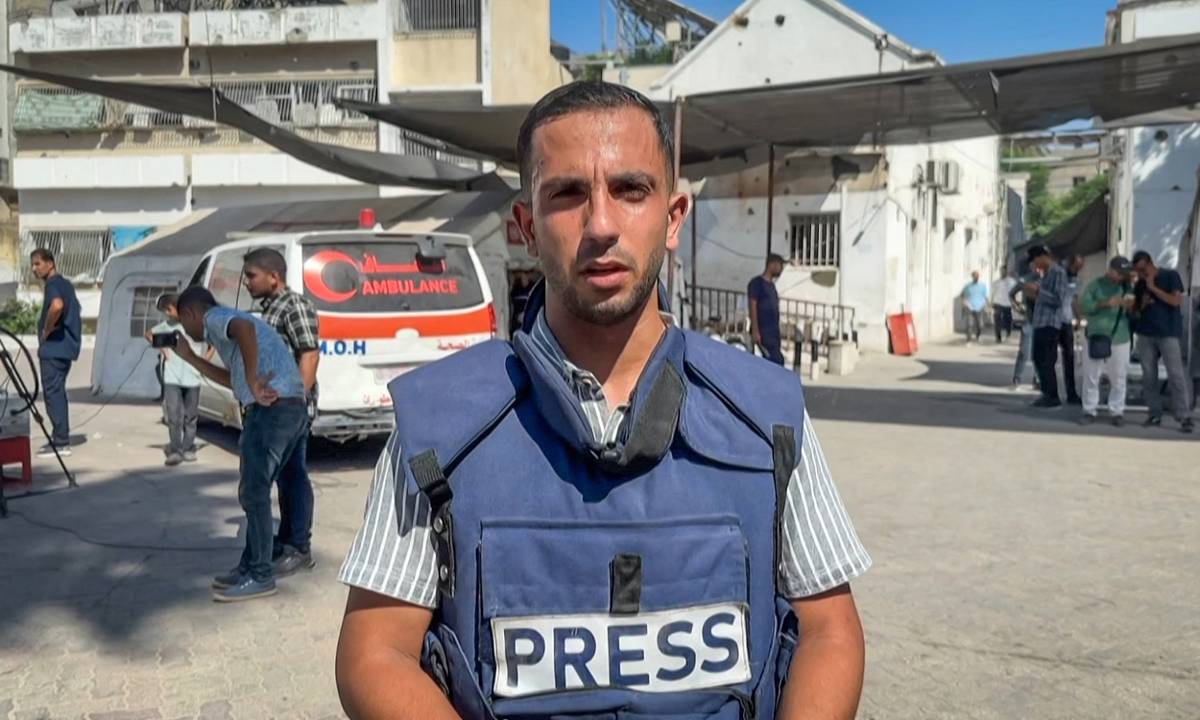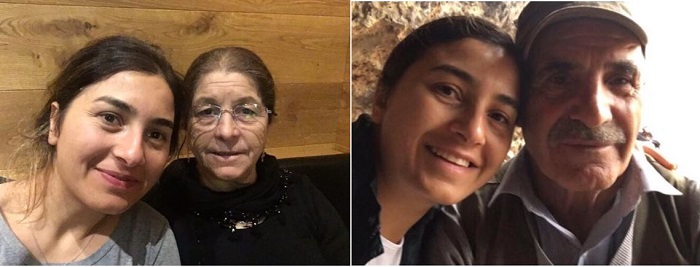The Syriac community in Turkey, which has only one kindergarten, is unable to benefit from the right to education in their mother tongue. Thanks to the initiative of Adem Coşkun, an expert on the Syriac people and president of the Turabdin Institute, the first Syriac language course in the history of the Republic was launched in March in Midyat. Coşkun, who taught 29 students over the three-month course, stated, “The Syriac people must preserve their mother tongue.”
According to data, in the 1913-1914 academic year, there were a total of 2,580 schools belonging to Christian communities in the Ottoman provinces and districts. Of these schools, 29 belonged to the Syriacs (Assyrian-Aramaic-Chaldean). Despite the fact that the education rights of Christian communities in Turkey were guaranteed by the Treaty of Lausanne, the Assyrians were unable to open schools for approximately 90 years following the closure of the last Assyrian school in Mardin in 1928.
While the Syriac people have the right to education in their native language and access to educational materials in Iraq, Iran, Syria, Germany and Sweden, this right does not exist in Turkey.
The Syriac Associations Federation (SÜDEF) submitted a petition to the Ministry of National Education on 25 September 2013 to open a primary school. SÜDEF President Evgil Türker shared the following information about the application: "The Ministry of National Education responded to this application on 11 October 2023. The response was unclear; they neither said yes nor no. The application has been left pending. They made it clear that the matter was beyond their authority. Since then, they have not taken any further action."
A first in the history of the Republic has been achieved for the Syriacs, who have only one kindergarten in Turkey. Thanks to the efforts of Adem Coşkun, an expert on the Syriac language and president of the Turabdin Institute, a Syriac language course was launched on 1 March at the Midyat Public Education Centre. Over the course of three months, 29 participants from various backgrounds, including Syrians, Kurds, Arabs, and others, completed their Syriac language education using materials prepared by Coşkun.
Adem Coşkun answered our questions about the Syriac language course.
Can you provide information about the course? When and how did it start, and how were the materials provided?
In 2023, I met with the management of the Midyat Public Education Centre (PEC) to discuss granting Syriac official status within the Ministry of National Education in Turkey. However, we found that Syriac was not included in the current education modules. They therefore stated that no education courses related to Syriac could be opened. I continued to consult with the PEC administration regarding the steps to be taken in this regard. In 2024, I prepared a long and comprehensive report with justifications and sent it to Ankara. The report was returned in February 2025 with positive results. Of course, since this was a first in Turkey, we immediately announced the first course. On 1 March 2025, we started a three-month training programme with 10 hours of classes per week. Throughout the course, I primarily used the materials I had prepared for the Mardin Artuklu University Distance Education and Research Centre (MAUDERC) and the Turabdin Institute, supplemented by Syriac reading books.
 Are all 29 of your students Syriac?
Are all 29 of your students Syriac?
The quota for the first course was 30 students. The number of students who registered was 29. We started the first course with a very high participation rate compared to other courses. The majority of the students participating in the course are not Syriac. Of course, there are Syriac students as well. In addition, Turkish, Kurdish, Mıhalmi, Arab, and Yazidi students showed great interest in Syriac.
How long did the course last and what did it cover?
Our standardised course for each level lasts three months. As I teach the course at MAUDERC, I use original Turkish-Syriac materials that I have prepared, developed and adapted for PEC myself.
What is the importance of teaching in your native language?
As a Syriac, the joy of teaching in my native language within the Ministry of National Education, i.e. an official institution, is indescribable. Syriac has a completely different alphabet, a written history spanning thousands of years, and a rich literary tradition. Opening and teaching the first official course in this ancient language of these ancient lands is a source of pride. This is also a debt of gratitude I owe to this language and culture. I consider it extremely important both as an achievement and as a step forward for the future.
What is the historical significance of the course?
Syriac has been a very important language throughout history. Indeed, it was the language spoken by Jesus Christ, the first liturgical (religious) ceremony was held in Syriac in Jerusalem, and some sections of the Old Testament and the New Testament were written in this language. Additionally, it served as a lingua franca (common language) from early times onwards. It was used for a long period from China to the interior of Anatolia, and from Central Asia to Syria and Egypt. Of course, we must not forget the academies of Nsibin (Nusaybin), famous for its religious, social, and positive sciences, the Qenneşrin Academy, the Gundişabur Academy, and the Beth Hekmtho (Beytül-Hikme) Academy in Baghdad.
These were the most important centres of learning of the period, some of which existed and operated from the 4th century until the 8th century, and others until the 12th century. The knowledge produced in these centres and the translations made from Greek to Syriac and from Syriac to Arabic made a significant contribution to the formation of Islamic culture and art. After the 13th century, Syriac academies lost their importance due to the conditions of the time, but the language continued to be spoken by an elite group in churches and monasteries. During the Republican period, there was a Syriac secondary school (lycée) that continued until 1928. This course was the first official Syriac course within the Ministry of National Education.
How is Syriac used in Turabdin? How do the Syriacs learn their native language in this region?
In Turabdin, especially in Midyat and the surrounding villages, the Syriac people speak the Syriac language (Surayt). Similarly, it continues to be used as the liturgical language in churches. As a result, only Syriac children learn the language through natural and traditional methods, enabling them to participate in liturgical rituals at church and use it in daily life.
 The Syriac people are unable to benefit from the right to education in their mother tongue. In western provinces, the rate of learning and use of Syriac is very low. What can be done about this?
The Syriac people are unable to benefit from the right to education in their mother tongue. In western provinces, the rate of learning and use of Syriac is very low. What can be done about this?
After 1928, the situation and problems surrounding the teaching of Syriac and whether or not to teach it continued to remain a mystery. Indeed, the role and stance of Metropolitan Mor Ivannis Hanna Gandor during that period remain unknown.
But most importantly, we must do this not as individuals but as a society. In fact, the church should also take responsibility and initiative in this matter. Because these rights were granted to the first community foundations, or minority foundations as they are also known, after the Treaty of Lausanne. Since Syriac foundations also have this status, the first official request should come from these institutions. As an example, I think the opening of the Mor Efrem Syriac Primary School in Istanbul is a very important step. Additionally, these courses could also be opened in places where Syriac people live, such as Istanbul, Adıyaman, and Diyarbakır, within the framework of PEC. Because Syriac has been introduced into the educational modules within PEC.
What should be done to preserve Syriac, which is listed in UNESCO's Atlas of Endangered Languages?
According to UNESCO, Syriac is on the list of languages that are in danger of extinction in the near future. However, it is always possible to change this. This can be achieved with the right investment, the right method and an institutional approach. Opening schools that teach Syriac, disseminating digital and printed works in the native language, and ensuring that the language is spoken regularly in daily life are of utmost importance. Additionally, establishing an international Syriac Language Group and annually introducing new words to the language are essential steps that must be taken. I am currently working on a three-volume series, which may be expanded, on Syriac grammar and learning and teaching Syriac. I believe that when these works are completed, they will breathe new life into the Syriac language. This is because I have been conducting this work very meticulously for about five years, using a very simple and scientific method and relying solely on my own resources.
 As an instructor conducting research on Syriac, what would you like to say to the Syriac people regarding their native language?
As an instructor conducting research on Syriac, what would you like to say to the Syriac people regarding their native language?
First and foremost, the Syriac people must do something about this language. The fact that Syriac people living in cities such as Istanbul, Mardin, İdil, Diyarbakır, and Adıyaman do not speak their native language is severely weakening the language. At the very least, children should be provided with the opportunity to learn, to read and write Syriac from an early age, within the existing possibilities. The same applies to the Syriac diaspora. The second step is to establish official Syriac schools, institutes and research centres in every country on an institutional basis. It is very important that wherever the Syriacs build churches, not only a madrasa, as was the case in the 4th century, but also a research centre should come into being. At the very least, children should be provided with the opportunity to learn to read and write Syriac from an early age, within the limits of existing possibilities. The same applies to the Syriac diaspora. The second step is to establish official Syriac schools, institutes, and research centres in every country on an institutional basis. Just as the Syriac people built a madrasa alongside every church they built in the 4th century, it is also very important for a research centre to be established. Church and civil society leaders should also work to develop the language through print, digital, and other activities. All Syriac institutions and organisations should make it their duty to develop and preserve the language. Most importantly, parents should speak Syriac with their children to ensure the language's survival in society.
Ways to learn Syriac
There are very limited options for those who want to learn Syriac. In the monasteries of Turabdin (Mardin and surrounding provinces), Syriac language education is provided by clergymen only to boys during certain months of the year. Girls are not able to benefit from this education. Apart from this, there are also online Syriac courses available.





